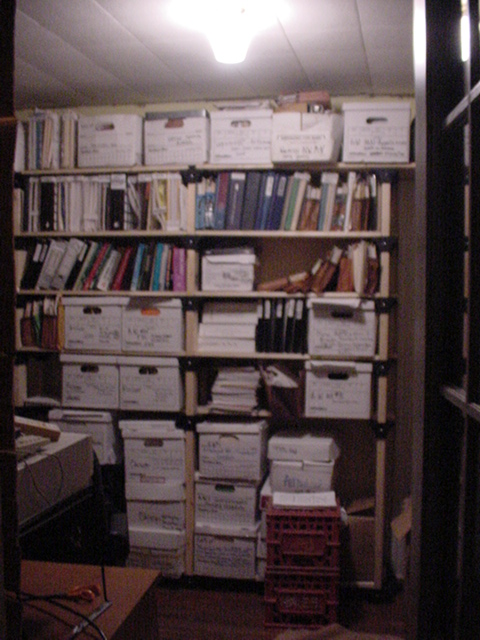Hey Gov – time to get Bob Cupit and Mike Bull out in front!
September 9th, 2005
This weekend I was mired in energy policy — I needed to stay home for quality time with the girls, a good excuse to bite the bullet and reorganize my home office, which is the polite term for boxes and piles of energy biomass strewn all over the house. It’s important stuff, consisting of electrical studies, newspaper articles from all over, project applications, thousands of pages of transcripts, bootleg EPRI reports, the Arrowhead file alone is over 12 boxes and my shelves are collapsing. So it’s off to buy 2x4s and shelf “systems” and do what it takes to anchor it into the walls and give the house an easterly list. Ta-daaa! Done!

The worst part of this job was the days of prep work in refiling and reboxing, reliving the files, and the best part is recognition of some brilliant nuggets, particularly in nuclear, and rediscovering all the gems of information that should be public information. Without John Bailey as keeper of the ME3 website, we’ve lost the most important information clearinghouse ever — in this day of computers and internet, there’s no excuse for not having a public resource for all of this. So how do we make sure all of this is in the public domain — that’s what I’m mulling about these days.
FOCUS ON ENERGY POLICY NOW!
Today’s STrib editorials were energy focused, and here’s one I agree with wholeheartedly. We need to put energy issues and those working on energy up front where they belong, particularly given those in important positions, like Bob Cupit, the Energy Planning Director, and Mike Bull, Energy Pooh-Bah.
Editorial: Energy & govs/What they say, do matters
September 9, 2005
Let’s play “Name That Governor.” Who responded to fast-rising gasoline and heating-fuel prices by creating a state agency to promote conservation and non-fossil fuel energy sources?
Answer: Gov. Wendell Anderson. The year was 1974.
Who made headlines urging that Minnesota become as energy-independent as possible? Who proposed that Minnesota become North America’s top energy research center? Who asked the Legislature for a $30 million program to promote conservation and renewable energy sources, including solar, biomass and peat? (Hint: Peat is found on the Iron Range.)
Answer: Gov. Rudy Perpich, in 1983. By then, Minnesota was on its way toward establishing itself as an energy policy leader among the states. Actions by state lawmakers were crucial to putting ethanol-blended gasoline in Minnesotans’ vehicle tanks, and turning the Buffalo Ridge in southwestern Minnesota into the Saudi Arabia of wind-generated electricity. The Natural Resources Research Institute at the University of Minnesota-Duluth was spawned by Perpich’s call for more energy research.
It cannot be said that Minnesota has dropped the ball on energy in the intervening years. But this state is no longer running away with it, either.
Seventeen states have tougher requirements for electric utilities to convert to renewable fuel sources for power generation. Others offer tax incentives that Minnesota does not for the purchase of energy-efficient products. One of the state’s key conservation programs would be more effective if it concentrated on business rather than residential consumers, a legislative auditor’s report said. Minnesota’s interest in ethanol as a motor fuel has appeared to be mostly about propping up the price of corn.
Still, to his credit, Gov. Tim Pawlenty mimics Perpich on energy in an important way: He talks about it. In recent months he’s popped up at pro-ethanol rallies and wind-turbine dedications. As gas prices shot up last week in the wake of Hurricane Katrina, he touted ethanol use in motor vehicles, and said at the State Fair that it’s time to “encourage people to think about their traveling and purchasing habits, in a way that emphasizes smarter ways to get around, like transit and perhaps more fuel-efficient vehicles.”
What governors say matters. So does how they organize their administration. In that regard, Pawlenty might consider mimicking Anderson’s move. The state energy office is now tucked almost invisibly in the Commerce Department. Given the importance of sustainable, affordable energy supplies to this state’s prosperity, a more visible and vigorous state office promoting conservation and renewable resources is warranted.
Leave a Reply